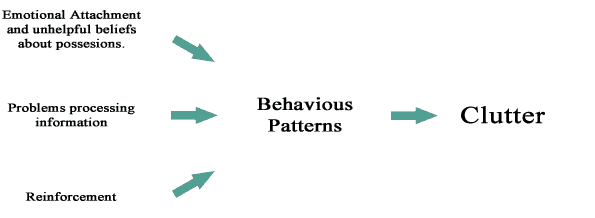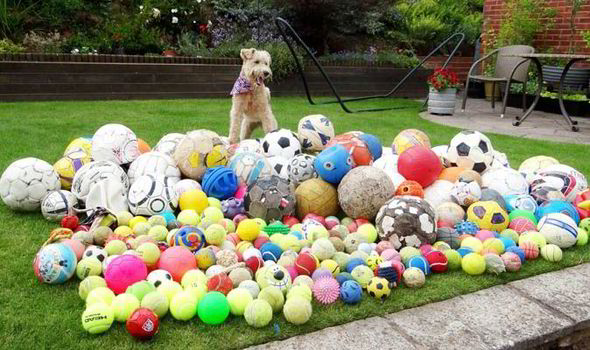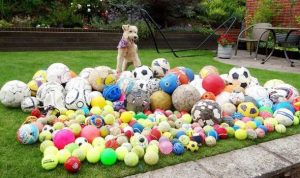“It’s not about deciding what I do or don’t need.
It’s not even about knowing what I should or shouldn’t keep.
It’s about understanding what I can handle.”
-Dana White
Hoarding is as old as time. In ancient times if you got tired of the clutter, you simply buried it. Archaeologists would probably agree with the adage “ One man’s trash is another man’s treasure.” On a serious note, people have very different ideas about what it means to have a cluttered home. For some, it may be a small pile of belongings in a corner of an otherwise well-ordered room. For others, when there is only a small narrow pathway between one room or another may still be considered OK, and in extreme cases, this attachment with access issues continues throughout the house. This is when hoarding ‘extremism’ comes into its own. In a r percentage of situations the attachment to ‘things’ goes beyond the house to swallowing up space in the backyard and/or front yard.
What is the diagnostic criteria for Hoarding Disorder?
- Persistent difficulty parting with or discarding possessions, regardless of their actual value.
- The difficulty is due to a perceived need to save the items and to avoid the stress associated with discarding them.
- The difficulty of discarding possessions results in further accumulation of possessions that congest and clutter active living areas. In so doing the clutter compromises the intended use of those areas. Often it is only through the intervention of a third party (family members, cleaners, or authorities) that the matter is addressed.
- The hoarding causes clinically significant distress or impairment in social, occupational, or other important areas of functioning (including keeping a safe environment for self and others).
- That the hoarding is not caused by another medical condition (e.g., brain injury, cerebrovascular disease, Prader-Willi syndrome).
- The hoarding cannot be explained by symptoms of another underlying mental disorder (e.g., Obsessive-compulsive disorder, lowered energy in major depressive disorders, delusions in schizophrenia or another psychotic disorder, cognitive deficits in major neurocognitive disorder, restricted interests in autism spectrum disorder).
The most frequent form of acquisition is excessive buying, followed by attainment of free items (e.g., leaflets, papers, items left on the curbside for collection).
When does hoarding begin?
Hoarding appears to begin early in life and continues well into the late stages. The symptoms may first emerge around ages 11-15 years, and start interfering with the person’s everyday functioning by the mid 20’s, and causes significant impairment / problems by the mid 30’s. In a nutshell, hoarding continues increasing with each decade of life.
What are the other risk factors?
Temperament: indecisiveness is a prominent feature of individuals who hoard. Anxiety may also be another contributing factor.
Environment: individuals with hoarding disorder often retrospectively report stressful and traumatic life events prior to the onset of the disorder or which caused the hoarding to become worse.
Genetic and physiological: Hoarding is familial (starts in families), with about 50% of individuals who hoard reporting having a relative who also hoards (or hoarded).
Cultural: Data suggests that hoarding is a universal phenomenon with consistent clinical features.
Gender related Diagnostic Issues: both sexes are represented, but females tend to display more excessive acquisition, particularly excessive buying, than do males.
Trauma: Traumatic events exacerbate hoarding as a coping mechanism.
Social isolation: Hoarders are often socially withdrawn and isolated with hoarding seen as a type of comfort.
Research continues. In a world awash in anxiety, fear, worry and accumulation of things as a type of coping mechanism, the need to manage feelings by accumulating items continues to grow. Hoarding doesn’t just include inanimate objects, but can include animals. E.g., dogs, cats, birds, the list is endless.
“A human being has a natural desire to have more of a good thing than he needs.”
– Mark Twain
What can be done to address hoarding disorder?
Psychotherapy, also called talk therapy, is an effective treatment. Cognitive Behaviour Therapy in particular has been shown to be very successful. Seek out a qualified and reputable therapist with experience in treating hoarding disorder.
As part of cognitive behavioural therapy, you may:
- Learn to identify and challenge thoughts and core beliefs related to the acquiring and saving of items. What are the thinking errors.
- Learn to question and resist the urge/need to acquire more things.
- Learn to organise and categorize possessions to help you decide which ones to keep and which to discard. “The decluttering process.”
- Work on and improve your coping and decision-making skills.
- Use in-home visits by a therapist or professional organizer to help you declutter your home.
- Reduce the isolation and increase social involvement with more meaningful activities.
- Learn strategies to enhance motivation for change.
- Use periodic visits/ongoing treatment to keep you on track and reinforce healthy habits.
- Treatment may involve assistance from family, friends and agencies to help with the removal of clutter. This is particularly the case for the elderly who may be struggling with medical conditions that make it difficult to maintain momentum or motivation.
What are some self help strategies for Hoarding Disorder to place in the toolbox?
- Get the facts about stress and anxiety. Both are a matter of managing rather than elimination in your life. The resources you rely on are both internal (thoughts and feelings) and external (friends, family, environment) and how we interact with these.
Once you can identify the triggers (event), and name the problem (thoughts, feelings, behaviours), you can begin to deal with it (interventions). - Learn about hoarding. It’s about acquiring stuff, getting rid of existing items, both of which lead to feelings of anxiety and extreme distress. It may reduce contact with the outside world, impact on employment, and general functioning for the person.
- Build a toolbox of strategies. Understand the factors that add to your hoarding problem. What are the reasons? Is there the sentimentality aspect, the guilt in not giving away ‘family heirlooms’, the related beliefs attached to personal items. Perhaps your family had strong views about waste versus use. Many people struggle with decision making, categorization, and poor problem solving.
With this struggle in play certain behaviour patterns occur and are reinforced. Consider the following:
 Get motivated – it needs to be cultivated. Identify your thoughts and beliefs. Look at the reasons to change your behaviour. What will you gain?Look to the future. What will your life be like? If you don’t change what will happen? Get Organised: Baby steps, measurable goals, avoid distractions, be flexible. Be systematic – use the OHIO principle. “Only Handle It Once”.
Get motivated – it needs to be cultivated. Identify your thoughts and beliefs. Look at the reasons to change your behaviour. What will you gain?Look to the future. What will your life be like? If you don’t change what will happen? Get Organised: Baby steps, measurable goals, avoid distractions, be flexible. Be systematic – use the OHIO principle. “Only Handle It Once”.
a. Handle
b. Determine its outcome
c. Place into a category/location.The locations/categories may consist of :
Area 1 – Keep
Area 2 – Sell
Area 3 – CharityGarage sales using the help of good friends can earn you some cash to put towards a well deserved holiday, or boost your funds for creative endeavours.
The money could go towards relieving the stress of unexpected bills and then there are the gifts to charity; volunteers will welcome donations. There are some wonderful books and tips by the declutter expert, Peter Walsh. Peter’s hints are easily accessible on the internet. He is an empathetic man who understands the milestones – the highs, lows and the passing down of family memories/memorabilia. A good book of his is…Let it Go. Downsizing Your Way to a Richer, Happier Life. Peter Wash…2017 - Continue to practise your successes. Managing Hoarding Disorder take hard work and commitment. Take some time to give yourself credit for a job well done. Be kind to yourself as you take those small steps to change. Practice your new-found skills, and remember, there are people out there in your community who can help you in the journey to change and wellbeing.
“Simplicity. Identify the essential.
Eliminate the rest.”
– Leo Babauta


